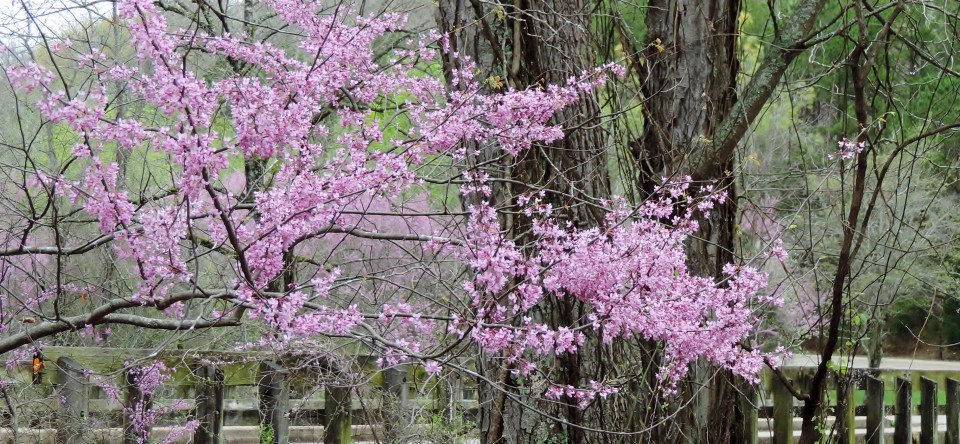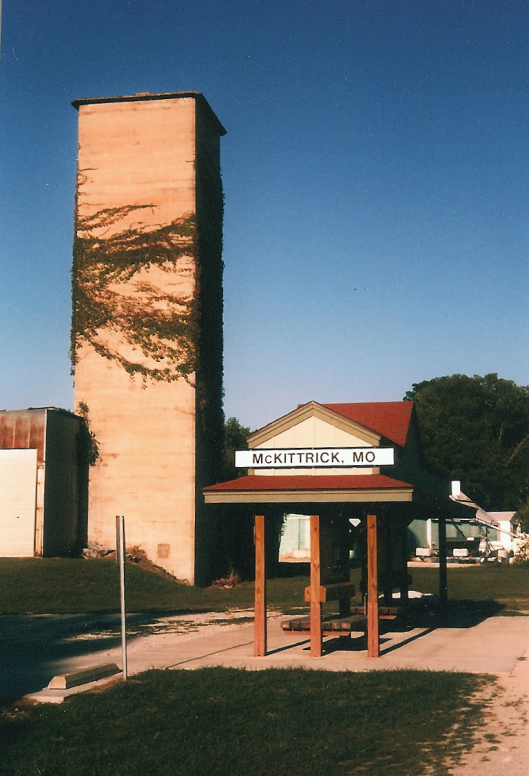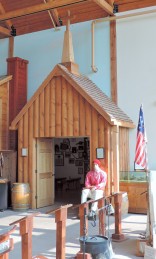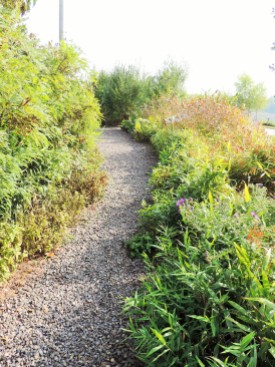Tags
- Adventure 1-The Lewis and Clark National Historic Trail
- Destination 3-The Katy Trail
In 2000, Jim and I bought bicycles…they rank as one of our best, and favorite, gifts to each other ever. We have taken those bikes across country to so many places, and biked so many trails. But our favorite remains the Katy Trail, which runs for 240 miles across our own state of Missouri. (Full disclosure…this picture was taken fifteen years ago. We are now fifteen years older, not quite so thin, but still enjoying the trail.)
The Katy Trail is a rails-to-trails biking and hiking path that begins in Clinton, MO on the western side of the state, and runs to Machens, MO on the eastern side. It runs along what was once the rail corridor for the Missouri-Kansas-Texas Railroad, commonly known as the Katy. When the railroad decided to abandon the route, the state, over some time, was able to obtain it in bits and pieces, eventually turning it into a first rate biking and hiking trail. The trail was named Katy Trail State Park, and has been a busy recreational destination for many people ever since. The section of the trail between St. Charles and Boonville has been designated a part of the Lewis and Clark National Historic Trail.
When you travel on the Katy Trail, you will have an opportunity to see many of the features that make Missouri such a beautiful place in the middle of the country. Most of the trail hugs the Missouri River, and those are my favorite places to ride.
There are twenty-five trail-heads along the trail. At each of these you will find parking spaces, kiosks with maps of the trail and explanations for interesting sites to be seen along that particular section of the trail. Many of the trail-heads are in or near cities.
The trail stretches through various landforms within Missouri. In addition to the river, you will see forests, wetlands, prairies, pastureland, and open farmland. Wildlife is abundant in these areas. If you are lucky, you may even see an eagle soar above you, or sitting in a tree. Or, as we did, you might see a cute little skunk run across the trail right if front of you. We stopped, were very still…he went on his way, then we continued on ours!
If you ride or hike the trail in different seasons, you will see an ever-changing, always beautiful landscape.
There are many historic towns along the trail, and stopping at them will give you an opportunity to explore some of the history of our state. You will travel through the “Missouri Rhineland”, home to early German settlers, through Missouri’s wine country with its many outstanding wineries, cities that were founded before the Civil War, and areas visited by Lewis and Clark as they made their way up the Missouri River. If you are hungry, there are great places to eat. If you are on a long biking or hiking outing, and you are tired, some of the best Bed and Breakfast establishments can be found in the towns and cities along the trail.

One of our favorite places to eat when we bicycle is the Augusta Brewery which sits on the trail. Augusta is in the wine country, and also has several great wineries.
All along the trail you will find relics of days gone by, when early farmers began settling the area, when the railroad was a fixture on the route, and many more.
Once again, as you venture out, finding your park in this National Park celebration year…come to Missouri, we have a lot to show you. If you live here, come find your park in your own backyard!
Dried Apples
We love to pick apples in late summer and early autumn here in Missouri. We always pick more than we can eat, and more than we want to make into applesauce. I like to dry some of the apples for healthy snacks. When I take these dried apples on a biking or hiking jaunt, I usually cut them up, and mix them with other healthy items I have on hand, such as nuts, pumpkin seeds, or coconut.
To make dried apple slices:
- 4 cups water
- 1/2 cup lemon juice
- 2 large apples
Cut the apples crosswise into 3/8″ slices. I do this with my mandolin, but a knife works just as well. Mix the lemon juice and water. Place the slices into the water mixture for 30 minutes to help prevent browning. When ready to dry the apples, pat off the water as well as you can with a towel
The apples can be dried in a commercial dehydrator or in the oven.
If you are using a dehydrator, set the temperature to 135 degrees, and dry for 4 to 8 hours. The time will depend on the water content of the apples, as well as the humidity in the room. The apples are done when they feel like raisins and have no visible liquid. They will keep for a while in a plastic bag, but if you want to preserve them longer, put them in the freezer.
To dry the apple slices in the oven, preheat the oven to 200 degrees. Place the apples on parchment lined baking sheets in a single layer. Bake in the oven on the upper and lower racks for 1 hour. Remove the apples slices, turn them, and return to the oven for 1 to 2 more hours, depending on your preference for soft or crispy apple slices. Turn off the oven, crack the door, and let the apples stay in the oven 1 to 2 hours more.
Enjoy!




































